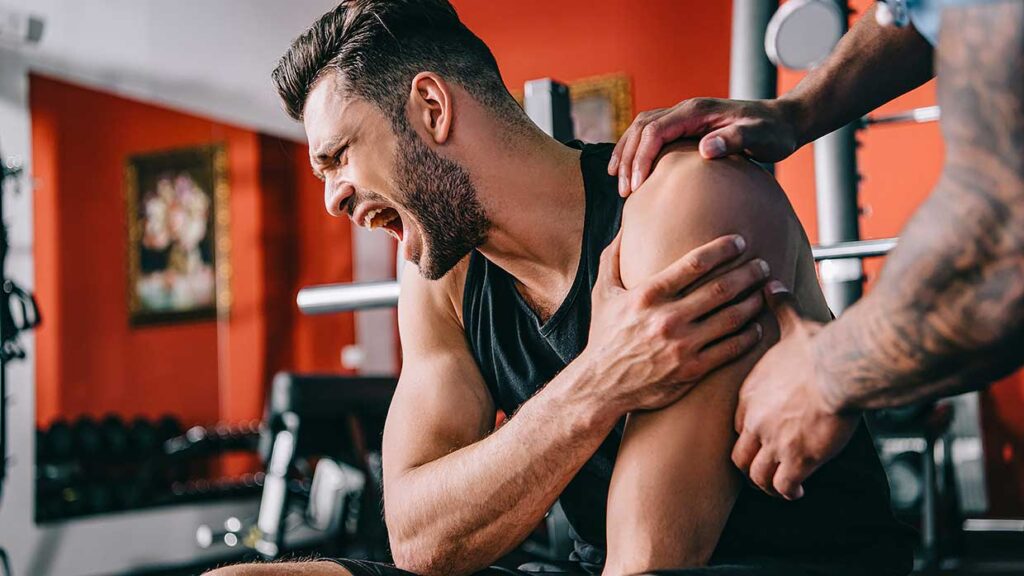Platelet-rich plasma therapy has been gaining popularity over the past decade throughout the medical community, especially in orthopedics. Growth factors, which are abundant in PRP, are thought to impact the inflammatory process and encourage the healing of tendons, ligaments, muscles, and bones. Platelet Rich Plasma is useful for the treatment of many musculoskeletal conditions due to its potential to biologically enhance healing and a low risk of side effects.
PRP is the manufactured and administered release of human platelets with human plasma and associated growth factors at a supernatural level for clinical purposes. After drawing blood from the peripheral vein, it is centrifuged to divide the blood into layers. The injured site can then be treated by injecting high platelet counts mixed with small amounts of plasma. According to current theories, the topical release of PRP-containing growth factors, including fibroblast growth factor, platelet growth factor, connective tissue growth factor, and beta growth factor transformation along with highly active platelets, stimulates healing and encourages muscle growth.

WHAT ARE THE CAUSES OF SHOULDER PAIN?
First, we need to understand the structure of the joint. Forearm bones fit into shoulder blade sockets, called glenoid sockets. A group of tissues, the rotator cuff helps with movement. Also, the fluid-filled pouches or sacs cushion tissues and bones that absorb kinetic energy. Tendons of the shoulder joint connect muscles to bones. When one of these tissues is misaligned or inflamed, it results in shoulder pain.
Similar to :
- Bursitis or tendonitis is caused by excessive movement of the shoulder.
- Torn tendons are caused by frequent use of the joints.
- Shocks happen when the arm is moved and the top of the shoulder blade rubs against the tissue.
- When the upper half of the forearm is partially or totally pushed out of the socket as a result of a fall or injury, it is referred to as shoulder torsion.
- Arthritis of the shoulder.
- By repairing the tissue that supports the upper arm bone at its base, PRP injections into the shoulder can help you with the majority of these problems.
PRP THERAPY RELIEVES SHOULDER PAIN, ACCORDING TO CLINICAL STUDIES
PRP injections relieve pain and improve mobility, according to clinical studies at the National Centre for Biotechnology. The following was discovered by the doctors after examining 17 patients with various causes of shoulder pain :
- PRP therapy effectively relieved the pain caused by rotator cuff erosion when administered twice over the course of four weeks.
- The painful tissue around the shoulder socket was repaired with a single injection of PRP serum.
- Patients with shoulder bursitis whose fluid-filled sacs were removed responded well to PRP injections.
- Patients reported that PRP treatments provided better symptom alleviation than physiotherapy.

PATIENTS WITH LABRAL TEARS MAY BENEFIT FROM PLATELET-RICH PLASMA TREATMENT
Another common cause of shoulder pain is the labrum of the shoulder, a cup-shaped part of the cartilage that helps in supporting the forearm’s rounded top. The bone can shift if this cartilage tears. PRP injections can help with this issue as plasma contains chondrocytes, which are the building blocks of cartilage. PRP therapy can be used to treat shoulder labral tears if you frequently dislocate your shoulder.
PRP INJECTION FOR SHOULDER PAIN RECOVERY TIME
The majority of patients reported that after three months of treatment, their pain and movement issues had improved. Repair and rejuvenation of damaged tissues, tendons, cartilage, and nerves may only be possible with PRP therapy because it instructs the body to heal the area and promotes natural recovery. You can expect improvement in the area 3–4 weeks after the first session. PRP injection into the shoulder causes no interruption, but depending on the severity of the damage to your tissue, you might need multiple sessions.
